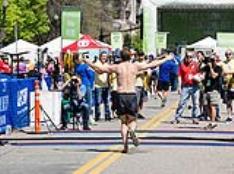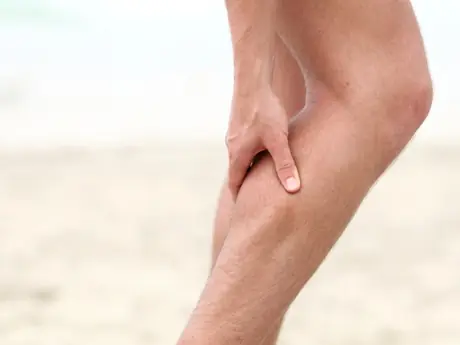Trail Running Advocates
1 of 5It might not surprise you to learn that people have been crazy about running in the woods for quite awhile, but did you know there's actually a national organization you can join? The American Trail Running Association (ATRA) was formed in 1996 with the goal of promoting the sport across the country. In 1997—ATRA's first reporting year—there were a total of 76 confirmed trail races. By 2013, that number had grown to nearly 2,800, with over 200 new races being added every year from 2010 to 2013. In addition to tracking statistics, ATRA offers memberships to individuals, corporations and race organizers, and its online race calendar is the go-to place for runners scoping out off-road races across the country.
Find:
Your Next RaceNature-Lover's Paradise
2 of 5
Nothing offers stress relief like getting outside and into nature, except maybe a good, hard workout. When combining the two, you end up with a mini-vacation from whatever ails you. Few other activities offer fresh air, encounters with wildlife, relative solitude and the chance to reconnect with our primal selves. With a trail run, you can get all that—even over your lunch break!
Find:
Your Next RaceA Special Kinship
3 of 5
As a whole, runners are a pretty friendly and sociable group, but trail runners almost seem to have their own tribe. Lisa Hane, a personal trainer and owner of Flex Appeal in St. Paul, Minnesota, and avid trail runner, says of the trail running community, "You see a lot of the same runners at the local races, so you get to know people; there's a definite camaraderie. Of course we're all competitive, but people will disregard their own time to stop and help another runner in need."
The tribe is a very welcoming one as well. "There are definitely more new people at races every year," Hane says, noting the sport draws a wide array of runners. "I've been at races where there are nine-year-olds and 80-year-olds competing."
Find:
Your Next RaceGentler on the Body
4 of 5
Although the 5K is still king in terms of road race participation, the past few years have seen a surge in popularity for ultra-running (races longer than a marathon). But pounding out 35, 50 or even 100 miles on the pavement just isn't feasible for many runners, and that's why so many ultras are held on scenic trailways. "With ultra-running being so popular, we've definitely seen a corresponding increase in the popularity of trail running," Peter Maksimow, ATRA's Outreach and Partnership Specialist, says.
Trail running is also becoming very popular among master runners. "People are starting to figure out trails are not as hard on the body as the pavement is," Hane says, who is in her mid-40s and completed the Superior Sawtooth 100-mile trail race last fall. In fact, many of the runners over 40 we interviewed have sworn off road running entirely because their bodies just feel better running off-road.
One reason may be the high variability of the terrain. Where treadmill or track running creates near identical strike force patterns over thousands of strides, running on a sidewalk or paved path can be even worse: the cant of the roadway or path (created for necessary rainwater flow into gutters or ditches) can have you running crooked, with one leg higher than the other, for miles and miles. This isn't the case on the trail, where elevation and surface type can change a dozen times in just a few hundred yards.
"You have to be okay with slowing your pace down," Hane says, "But I love the challenge of the terrain. My husband likes the wide, well-maintained trails, but those are too runable for me. I like the technical stuff, the single track. It forces you to be more mindful."
Find:
Your Next RaceRunning Events Near You
Everywhere
-
Waugoshance Trail Run 2025
Carp Lake, MI
-
2025 Heartland Series - Day 1 (OH)
Hicksville, OH
-
2025 Heartland Series - Day 2 (MI)
Niles, MI
-
2025 Heartland Series - Day 3 (IN)
Portage, IN
Get ACTIVE on the Go


Couch to 5K®
The best way to get new runners off the couch and across the finish line of their first 5K.
Available for iOS | Android






Discuss This Article